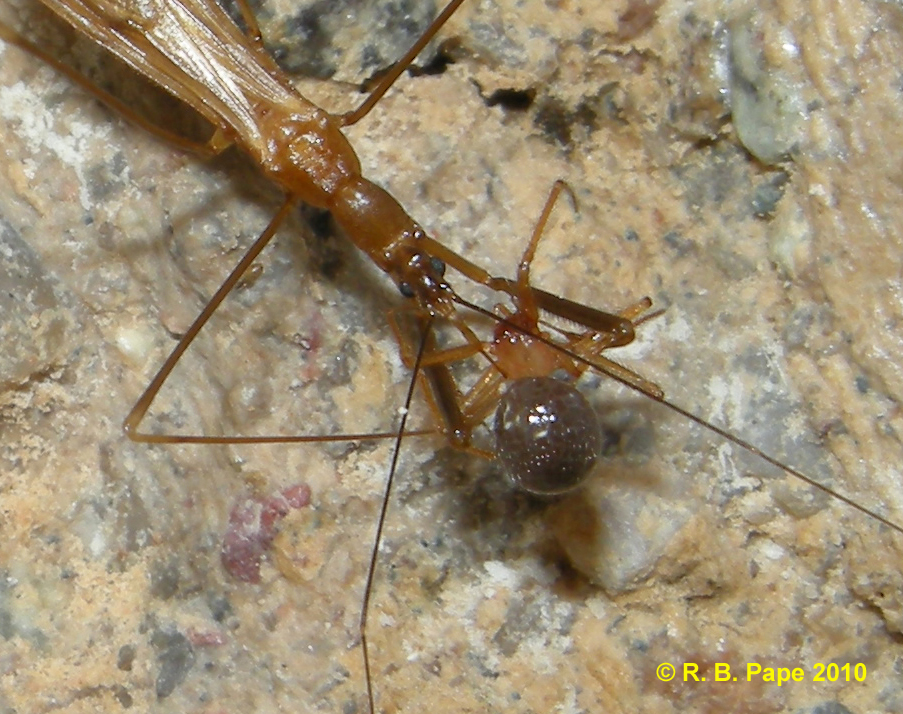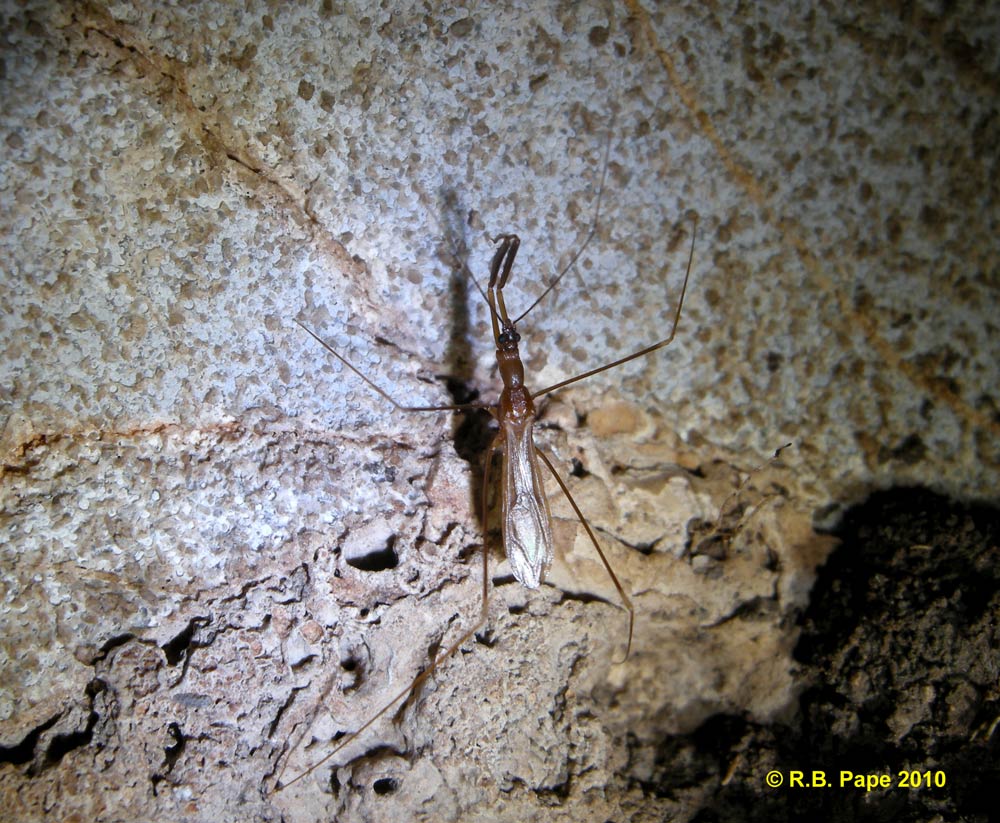
New 'Assassin Bug' Species Discovered in Arizona Cave

A new species of "assassin bug" — a type of gutsy predatory insect that neutralizes prey using its thorny front legs and sharp, needlelike mouth — has been discovered deep in a limestone cave in Arizona.
The bug, which has been christened the "labyrinth bug" (Phasmatocoris labyrinthicus), was found in Kartchner Caverns State Park, a massive cave system located in Cochise County, Ariz. The insect was first observed about 22 years ago, during studies that were conducted before the cave was developed into a state park, but at the time, researchers were unaware they had stumbled on a previously unrecognized species, said Robert Pape, an associate in the department of entomology at the University of Arizona in Tucson.
"It was actually found at that time, but it wasn't recognized as being anything special," Pape, who documented the new species in a study published June 12 in the journal Zootaxa, told LiveScience's OurAmazingPlanet. "They figured it was an accidental sighting of something from the surface."
Labyrinth bugs are found in discreet, catacomb-type recesses within Kartchner Caverns State Park, which is how the insect got its name. [In Images: Incredible Cave Creatures]
"They live in labyrinthine parts of the cave," Pape said. "They tend to be in areas that are very difficult, or impossible, for people to get into."
As such, the elusive, cave-dwelling bugs have only been studied a few times. "We've seen them maybe nine or 10 times," Pape said. "The population is small but stable."

The assassin's appearance
Sign up for the Live Science daily newsletter now
Get the world’s most fascinating discoveries delivered straight to your inbox.
Labyrinth bugs have long, thin legs and look similar to stick insects. Their front legs are prickly and raptorial, like those of a praying mantis — traits that help them grasp and trap prey. Once the labyrinth bugs seize their victims, they make quick work of rendering them helpless, Pape said.
"They have a sharp mouthpart that they use to suck juices out of their prey," he explained. "They're mostly sit-and-wait predators, but they're extremely quick once they reach out and snatch their prey."
The bugs also have wings, but Pape noticed that they do not seem to use them, even when provoked. This may be because labyrinth bugs have adapted to living in a cave for thousands of years, he added.
"Flight is an anti-predator response, but this bug doesn't seem to want to fly away," Pape said. "Instead of flying, it just tries to walk faster, which is comical to watch because their legs are like stilts, so they do this very jerky motion to get away."
Pape also found that labyrinth bugs are not picky eaters, choosing instead to feast on anything they can capture.
"They eat mostly soft-bodied insects, but not exclusively," he said. "In some interesting cases, these bugs have morphologically adapted to live in association with spiders, so they can manipulate and steal insects out of the webs."
How did they get there?
Assassin bugs can be found throughout the world but are most commonly located in tropical climates. There are currently about 1,000 known species, 38 of which have been recorded in subterranean habitats and only six of which are known to be endemic in caves, Pape said.
The labyrinth bug's discovery in Arizona is the furthest north an assassin-bug species has been discovered, which raises interesting questions about Arizona's ecological history, particularly at the end of the last ice age approximately 8,000 to 10,000 years ago.
"The climate in Arizona was very different — it was a lot wetter — and labyrinth bugs probably lived in rock shelters or cave entrances at the time," Pape said. "Then, when it became a desert here, they probably retreated deeper into the cave."
Pape said it is unlikely that other species of assassin bugs live in Arizona, but if they do, these predators would likely be found underground.
"It's possible, but this is kind of a holdover population from back when the climate here was different," Pape said. "If there are any others, they'd certainly be in caves."
Still, the labyrinth-bug discovery highlights the value of probing for life in the underworld, Pape said.
"There are a lot of things out there in caves that have yet to be found, but there's still not much research going on in caves, compared to other habitats," he said.
Follow Denise Chow on Twitter @denisechow. Follow OurAmazingPlanet @OAPlanet, Facebook and Google+. Original article at Live Science's OurAmazingPlanet.









